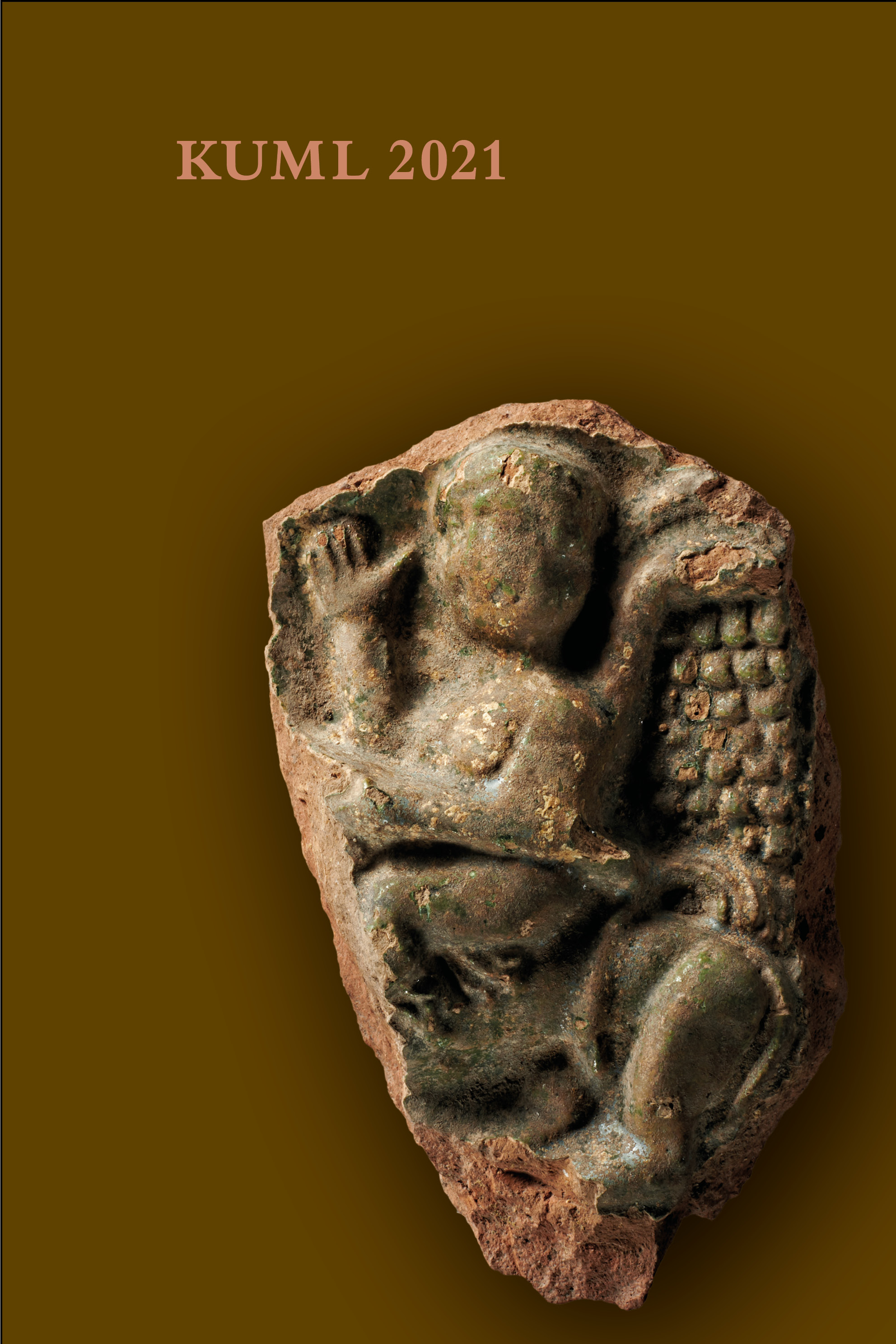Jousting putti and a childless count and countess
Tiles from Borggade, Aarhus
DOI:
https://doi.org/10.7146/kuml.v70i70.134639Keywords:
TilesAbstract
Jousting putti and a childless count and countess
Tiles from Borggade, Aarhus
Finds of tiles from an insulating and levelling clay layer between a potter’s workshop in Borggade from the mid-16th century and a later 17th-century building give a good insight into the changes in tile fashion from Late Gothic in the early 16th century to the Early Baroque in the first decades of the 17th century. A few polychrome, Late Gothic sherds may have ended up here by chance. A quantity of small, misfired sherds could not be put into a broader context.
With the aid of finds from other localities, two previously undescribed tile series are presented here. A sherd from the potter’s workshop bearing a lance-bearing putto riding on a goat is combined with finds from other excavations in Denmark and Germany to assemble most of a previously unknown series of green- or yellow-glazed tiles with jousting putti riding on goats and lions and a grandstand accommodating distinguished spectators. All the portal frames are different, with each tile patrix having been carved individually in its entirety. Several of the tiles show antiquated features in their construction, for example in the attachment of the rear part. It has not proved possible to find graphic originals in the available contemporary book illustrations. The series can be dated to some decades prior to the mid-16th century. Several sherds from the series found at King Frederik II’s castle at Antvorskov can possibly be interpreted as a witty reference to the formidable jousting contests held at his coronation ceremony in 1559. A figure illustrates the possible appearance of such a tiled stove.
A couple of sherds from the 17th century layer are mentioned: These belong to the known series produced on the occasion of Johannes Albrecht’s inauguration as count of Mecklenburg in 1611. A sherd bearing part of a left arm enables the reconstruction of a larger series with examples from the entire Baltic region. The people depicted in this series can, based on an engraving by Lucas Kilian from around 1613, be identified as members of the family of the count of Pomerania-Stettin, Philipp II, and it is possible to put name to several individuals. The tiles are either blackened or black-glazed, and the relief is quite shallow. The portal frame is common to all the tiles and actually comes from a series depicting the four evangelists
Downloads
Published
How to Cite
Issue
Section
License
Fra og med årgang 2022 er artikler udgivet i Kuml med en licens fra Creative Commons (CC BY-NC-SA 4.0).
Alle tidligere årgange af tidsskriftet er ikke udgivet med en licens fra Creative Commons.


